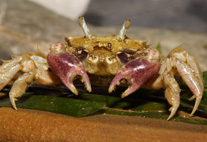Abstract
Male, female and egg of Pijnackeria recondita sp. n. are described from specimens collected at about 2,000 m in Sierra Nevada (Spain) feeding on Cytisus scoparius. The number of antennae segments in males, the smooth thorax in females and the different sculpturing of the egg capsule are the main differences from the other species of the genus. In addition, DNA barcode sequences (COI and COII) clearly differ from the other Iberian species of the genus. For COI, K2P minim-um distance between the new species and the most morphological related species, Pijnackeria hispanica (Bolívar, 1878), showed a mean of 8%. In the case of COII, comparison with the other species of Pijnackeria, showed a K2P minimum distance range from 8 to 10.5% (mean 9.2%); and comparison with the species of the related genus Leptynia, showed a K2P minimum distance range from 7.1 to 10.5%.

